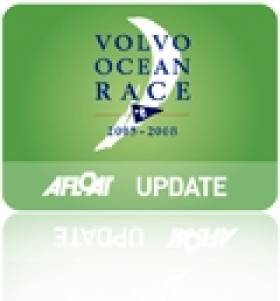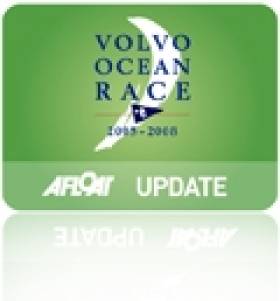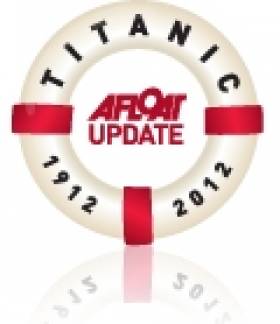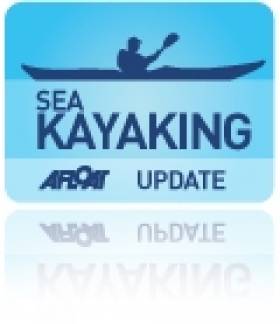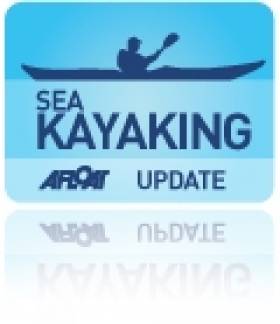Displaying items by tag: China
Chinese Entry Confirmed For 2014-15 Volvo Ocean Race
#VOR - It's been confirmed that a Chinese team will race in the 12th edition of the Volvo Ocean Race.
The new Team Dongfeng, backed by automaker Dongfeng Commercial Vehicle and run by international events and marketing firm OC Sport, will set sail with the rest of the fleet from Alicante in the 2014-15 race.
It also marks the third entry for China in the round-the-world yachting challenge, following the Discover Ireland-backed Team Sanya in the last edition of the VOR that concluded in Galway in exciting fashion, and the joint Chinese-Irish entry Green Dragon in the 2008-09 race.
Headed by team director and VOR veteran Bruno Dubois, Team Dongfeng is expected to be more than just a nominal Chinese entry, with plans for a significant number of Chinese sailors among its final race crew.
They will follow in the wake of Chinese sailing pioneers Guo Chuan, who crewed Green Dragon in 2008-09, and Team Sanya's 'Tiger' Teng Jianghe in last year's race - not to mention success for Chinese sailing at the London Olympics with gold in the women's Laser Radial for sailor of the year Xu Lijia, despite Ireland's own Annalise Murphy's stellar performance in the buildup to the medal race.
“Our priority is the recruitment and training of the Chinese sailors," said Dubois. "This is very clearly the biggest challenge we have – to condense many years of experience of the average Volvo Ocean Race crew into just 10 months.
“But equally this process is at the heart of the project, we want to leave a real legacy that will both motivate the Chinese to want to embrace the sport of sailing, and be able to develop the talent so that, ultimately, a future campaign could be 100% Chinese.”
Team Dongfeng will surely receive a warm welcome when the fleet visits the Chinese port of Sanya, returning as a stopover in the 2014-15 edition of the Volvo Ocean Race after its debut on the calendar in the last running.
VOR Update: Sanya Back On Route, Assembly Time For VOR 65
#VOR - The Chinese port of Sanya is the latest addition to the route for the next Volvo Ocean Race.
The sunny city in southern China - and the "best kept secret in sailing" according to Volvo Ocean Race CEO Knut Frostad - returns to the race with previously announced addition Lisbon after its debut hosting in the 2011-2012 edition,
"We were given an exceptional welcome by Sanya in the last edition, with the stopover providing a unique take on the race, and it's gratifying to know we will be back to build on our legacy," said Frostad.
Sanya also fielded a team backed by Discover Ireland in the last edition of the global yachting challenge - though they dealt with some misfortune only hours into the first leg of the race, suffering very serious hull damage as seen HERE.
Meanwhile, progress on the new design VOR 65 that will be raced in the 2014-15 Volvo Ocean Race made a great leap forward this week as the hull completed at Persico in Italy and the decking built at Multiplast in France made their way to Green Marine in Southampton for assembly.
The video above also includes a sneak peak at a mockup of the completed design that will hopefully take to the water in the coming months.
'Titanic II' Plans Unveiled By Mining Millionaire
#Titanic - An Australian mining millionaire has unveiled his plans to resurrect the Titanic for the 21st century, as The Irish Times reports.
Clive Palmer wants to build a new version of the ill-fated cruise liner - to be dubbed Titanic II - recreating the style and comfort of the original, but with modern navigational instruments and enough lifeboats for all on board.
"Titanic was a ship of dreams and Titanic II promises to be the ship where dreams come true," he told reporters at the Ritz Hotel in London last week.
Already he claims that 40,000 people have enquired about passage, and 16 individuals have offered $1 million each for a state room on the new liner for its maiden voyage after the vessel is completed in late 2016.
Titanic II will not be an exact replica of its predecessor, as it's planned to be four metres wider to provide greater stability, as well as featuring stabilisers and reverse propellers to provide for a more comfortable voyage.
It will also not be built at Harland & Wolff, the Belfast Lough shipyards that constructed the original White Star Line vessel, instead being contracted to the world record-holding large ship facilities at Jiangsu in China.
The Irish Times has more on the story HERE.
Irish Duo Reach End of Asian Adventure By Kayak
#Kayaking - David Burns and Maghnus Collins yesterday celebrated the end of their 16,000-mile Silk Roads to Shanghai adventure across Asia by foot, bike, raft and kayak.
Ten days ago we reported that the duo were in Wugu on the Yangtze River, just 450km away from completing their epic 292-day journey from Istanbul to Shanghai - and becoming the first people to navigate Asia's longest river from source to sea by kayak.
But as Shanghai Daily reports, the Irishmen have reached their destination in one piece, and received a rapturous welcome from the city's Irish community at the Bund yesterday morning.
Burns and Collins, from Derry and Limerick respectively, negotiated the final leg of their charity challenge in sea kayaks, battling rapids and avoiding dangerous wildlife such as bears and wolves.
And on arrival in Shanghai they paid tribute to the kindness and generosity of the Chinese people they met along the way.
"Chinese people were incredible for the whole journey as they offered help everywhere," said Burns. "The fishermen gave us tea when we were cold and gave us food when we were hungry. We were well looked after."
Shanghai Daily has more on the story HERE.
Irish Adventurers First To Take On The Yangtze By Kayak
#Kayaking - Last April Afloat.ie highlighted two intrepid Irish adventurers on the first leg of a gruelling 16,000-mile charity trek across Asia - by foot, bike, raft and kayak - along the Silk Roads to Shanghai.
But as the New Year began last week - just over eight months later - the duo of Maghnus Collins and David Burns were just 450km away from completed their epic journey, as The Score reports.
Limerick man Collins told the sports website that he and Derry native Burns were at Wuhu, a city on the Yangtze upstream of Shanghai, and from where the pair will tackle the rest of the route along the river by kayak.
It's surely incredible enough that Collins and Burns ran the equivalent of 25 marathons in 27 days as they crossed Tibet to the source of Asia's longest river - but being the first ever kayakers to navigate the "incredibly dangerous" Yangtze from source to sea is almost beyond belief.
Little wonder, then, that they've so far raised €30,000 for Irish-based charity Self Help Africa, and will surely reach their target of €50,000 by the time they expect to reach the finish line this day next week.
The Score has more on the story HERE - and listen to an interview with Collins and Burns on Today FM's The Last Word with Matt Cooper (at the 41-minute mark of part 2).
The 13 Deadliest Shipwrecks in History
#TITANIC - Irreverent tech website Gizmodo has marked the 100th annversary of the sinking of the Titanic with a list of the 13 deadliest shipwrecks in history.
The list runs the gamut from well over a century ago, in the early days of passenger shipping - see the SS Sultana, a tragedy overshadowed by the assassination of Abraham Lincoln and the end of the American Civl War - to more recent events.
Included are such as sad tales as that of the Empress of Ireland, the worst disaster in Canadian maritime history in which more than 1,000 died, and much closer to home the Lusitania, which went down off Kinsale in May 1915 after a torpedo attack.
But the worst was arguably suffered by the passengers of the steamship SS Kiangya - which blew up 50 miles north of Shanghai in December 1948, taking as many as 3,920 lives - and the horror that befell the MV Doña Paz in the Philippines in December 1987, where estimates put the death toll at an unbelievable 4,000.
Gizmodo has more on the story HERE.
#GALWAY HARBOUR - Galway Harbour management are looking forward to the prospect of Chinese investment in the port's redevelopment plans, the Galway Independent reports.
“Chinese investors clearly recognise not only the massive potential of ocean tourism, but also the specific potential for Galway as a destination port for cruise liners," said Fine Gael TD Brian Walsh, referring to discussions between the Government and Chinese officials in Beijing last week.
As previously reported on Afloat.ie, Galway Bay can expect to welcome at least nine cruise visits thus year, with the first scheduled to arrive late next month.
Walsh added: "Galway is an incredibly attractive city, and if we can make it accessible to the major players in the cruise-line market, the impact on the local economy would be immense.”
Galway Harbour Company CEO Eamon Bradshaw said that the port project had "illicited quite a bit of interest" when the company presented at the recent Chinese-Ireland Relations conference at NUI Galway.
"We’re confident that we do have a lot to offer and we are confident that an investor will come on board."
The Galway Independent has more on the story HERE.


























